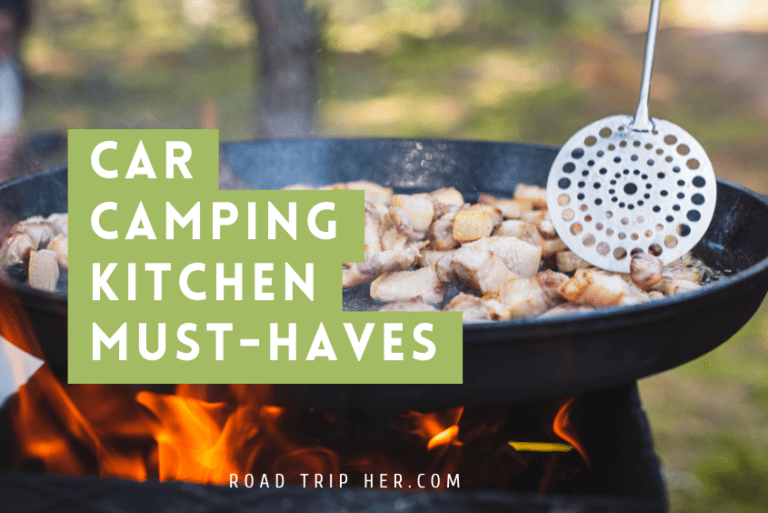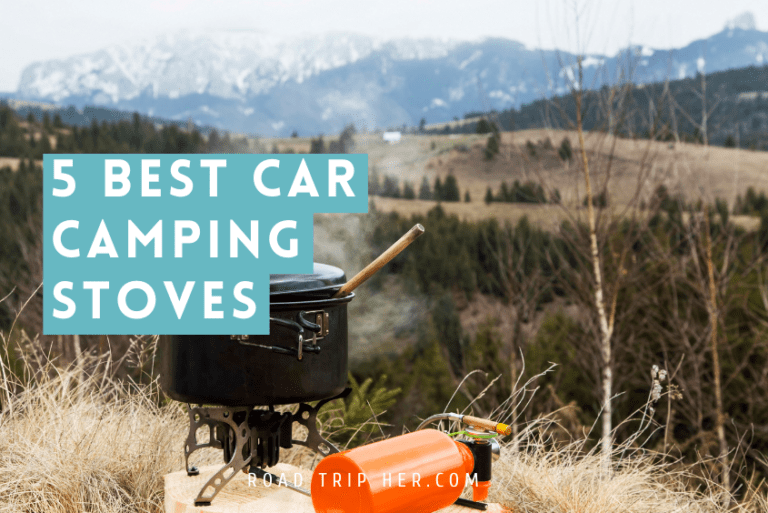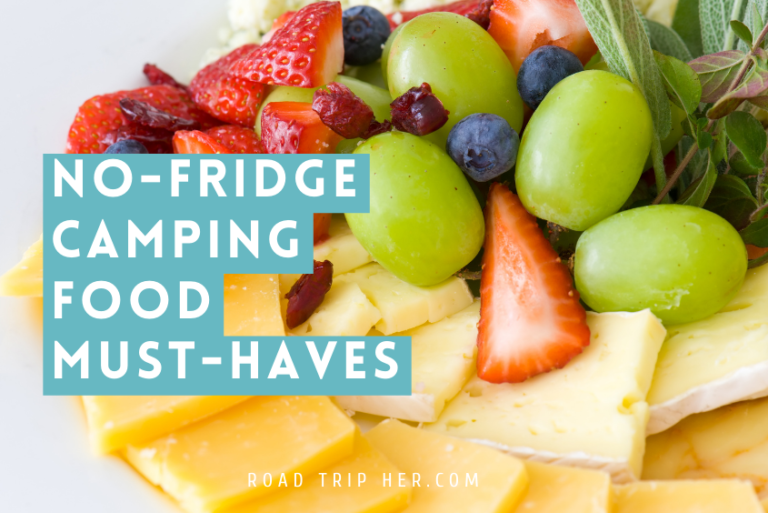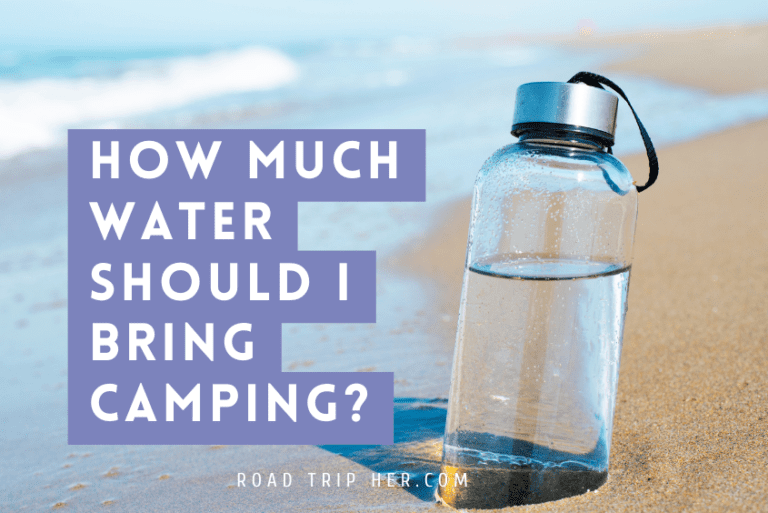Solo Car Camping: A Beginner’s Guide
Solo car camping is an adventurous and liberating way to travel and experience the great outdoors. If you’re a beginner to the world of car camping, this guide will provide you with all the information you need to have a successful and enjoyable trip. From understanding the concept of solo car camping to preparing for your first trip and ensuring your safety, we will cover it all. So, let’s dive in and explore the wonderful world of solo car camping!
Contents
Understanding Solo Car Camping
Solo car camping is exactly what it sounds like – camping alone with your car as your main mode of transportation and accommodation. It allows you to explore remote areas that may not be easily accessible by other means of transportation. The solitude and tranquility that solo camping offers can be a refreshing break from the hustle and bustle of everyday life.
One of the key benefits of solo car camping is the peace of mind it provides. When you’re on your own, you have the freedom to set your own schedule, make spontaneous decisions, and fully immerse yourself in nature. You can choose to stay in established campgrounds, national parks, or even find secluded spots off the beaten path. Solo car camping gives you the opportunity to disconnect from the digital world and reconnect with yourself and the natural world around you.
What is Solo Car Camping?
Car camping is a popular form of camping where you use your car as your primary mode of transportation and shelter. It offers the convenience of having all your gear easily accessible and provides a comfortable and secure place to sleep. Solo car camping takes this concept a step further by allowing you to experience the joys of camping alone.
Solo car camping is a form of solo travel that allows you to explore new places at your own pace. It gives you the freedom to choose your own adventure and make decisions based on your personal preferences. Whether you’re driving through scenic routes or camping in remote areas, solo car camping allows you to create your own unique journey and experience the world in a way that suits you best.
Why Choose Solo Car Camping?
There are several reasons why solo car camping is a good idea. First and foremost, it offers peace of mind. When you’re traveling alone, you have complete control over your itinerary and can make decisions based on your own comfort and safety. Solo car camping allows you to enjoy the solitude and serenity of nature without any distractions or compromises.
Additionally, solo car camping provides a sense of freedom and independence. You can choose your own destinations, stay as long as you want, and change your plans as you please. There’s no need to compromise with others or worry about conflicting schedules. It’s your trip, and you have the flexibility to make it exactly what you want it to be.
Solo car camping also allows for self-discovery and personal growth. It provides an opportunity for introspection and reflection, giving you the chance to connect with yourself and the natural world around you. It’s a great way to step out of your comfort zone and challenge yourself while enjoying the beauty and tranquility of nature.
Preparing for Your First Solo Car Camping Trip
Preparing for your first solo car camping trip may seem overwhelming, but with the right planning and preparation, it can be a seamless and enjoyable experience. In the following sections, we will guide you through the essential equipment and resources you will need, help you choose the perfect car for camping, and provide safety measures to consider. By following these steps, you will be well-prepared to embark on your solo car camping adventure.
Essential Equipment and Resources
When it comes to solo car camping, having the right equipment and resources is essential for a comfortable and enjoyable trip. Here are some must-have items to pack for your adventure:
- Camping gear: Tent, sleeping bag, camping stove, cookware, camping chairs, and a cooler for your food and drinks.
- First aid kit: Ensure you have a well-stocked first aid kit that includes band-aids, antiseptic ointment, pain relievers, and any necessary prescription medications.
- Navigation tools: GPS device or smartphone with offline maps, compass, and a detailed road atlas to help you navigate your route.
- Lighting: Pack headlamps, flashlights, and lanterns to provide adequate lighting during the night.
- Safety tools: Carry items such as bear spray, pepper spray, and a whistle for personal safety and wildlife encounters.
These essential items will ensure that you have a comfortable and safe camping experience during your solo car camping trip. Additionally, consider packing extra food, water, and clothing in case of unexpected circumstances or emergencies.
Choosing the Perfect Car for Camping
Choosing the right car for your camping trip is crucial to ensure a comfortable and convenient experience. Here are some factors to consider when selecting a car for solo car camping:
- Size and space: Look for a car that offers ample space for your camping gear and provides enough room for you to sleep comfortably.
- Fuel efficiency: Opt for a car that has good fuel efficiency to save on gas expenses during your trip.
- Off-road capabilities: If you plan on exploring remote areas or camping in national forests, consider a car with off-road capabilities to navigate rough terrains.
- Safety features: Look for a car with advanced safety features such as anti-lock brakes, stability control, and multiple airbags to ensure your safety on the road.
- Storage solutions: Consider installing roof racks or cargo organizers to maximize storage space and keep your camping gear organized.
- Bureau of Land Management (BLM) regulations: If you plan on camping on BLM land, check the regulations and restrictions regarding camping and vehicle access.
By considering these factors and choosing a car that suits your needs, you can ensure a comfortable and hassle-free camping experience.
Safety Measures to Consider
When embarking on a solo car camping trip, it’s important to prioritize safety and take necessary precautions. Here are some important safety measures to consider:
- Pepper spray and bear spray: Carry pepper spray for personal safety and bear spray for protection against wildlife encounters, especially if you plan on camping in bear country.
- Common sense: Use your common sense and trust your instincts. Avoid unfamiliar or unsafe areas and be cautious of your surroundings.
- Emergency contacts: Keep a list of emergency contact numbers, including local authorities and roadside assistance services, in case of any emergencies.
- Text table:
| Safety Measure | Description |
| Pepper spray | A non-lethal self-defense tool that can be used to deter potential attackers or aggressive animals. |
| Bear spray | A specialized pepper spray formulated to deter bears and other wildlife, providing a safe distance between you and the animal. |
| Common sense | Use your intuition, make smart decisions, and avoid potentially dangerous situations. |
By following these safety measures and using common sense, you can ensure a safe and enjoyable solo car camping experience.
Step-by-step Guide to Solo Car Camping
Embarking on a solo car camping trip requires careful planning and preparation. Follow these step-by-step guidelines to make the most of your adventure:
- Step 1: Research and select your camping spot by conducting extensive research and ensuring secure accommodations.
- Step 2: Pack according to your needs and destination, including essential items such as camping gear, cooking equipment, and clothing.
- Step 3: Navigate your route wisely, considering remote locations and overnight parking options.
- Step 4: Set up camp and secure your surroundings, especially in areas with wild animals or in bear country.
By following these steps, you can have a successful and enjoyable solo car camping experience.
Step 1: Research and Select Your Camping Spot
The first step in planning your solo car camping trip is to research and select your camping spot. Conducting extensive research will ensure that you choose a safe, comfortable, and enjoyable location. Consider the following factors when selecting your camping spot:
- Location: Determine the area or region where you want to camp and research the available campgrounds, national parks, state parks, or Bureau of Land Management (BLM) areas in that region.
- Amenities: Check the amenities available at the campsites, such as restrooms, showers, potable water, and electric hookups, to ensure your comfort.
- Reviews: Read reviews from other campers to get a sense of the quality and safety of the campsite. Look for reviews that mention the cleanliness, safety, and overall experience.
- Safety: Consider the safety of the area, including the presence of wildlife, accessibility to emergency services, and any specific regulations or restrictions in the area.
Once you have done your research, select a camping spot that meets your criteria and offers secure accommodations to ensure a pleasant and safe camping experience.
Step 2: Pack According to Your Needs and Destination
Thorough planning and packing are essential for a successful solo car camping trip. Consider the following items when packing for your adventure:
- Camping gear: Bring a tent, sleeping bag, sleeping pad, and camping pillow for a comfortable night’s sleep.
- Cooking equipment: Pack a camping stove, cookware, utensils, and a cooler for storing food and drinks.
- Clothing: Bring appropriate clothing for the weather conditions, including layers for warmth, rain gear, and comfortable hiking shoes.
- Personal essentials: Don’t forget to pack toiletries, sunscreen, insect repellent, and any necessary medications.
- Safety equipment: Include a first aid kit, flashlight, and a whistle for emergencies.
- Text table:
| Essential Items | Description |
| Camping gear | Tent, sleeping bag, sleeping pad, camping pillow, and any additional gear for your personal comfort |
| Cooking equipment | Camping stove, cookware, utensils, cooler, and any food and drinks you plan to bring |
| Clothing | Appropriate clothing for the weather conditions, including layers, rain gear, and hiking shoes |
| Personal essentials | Toiletries, sunscreen, insect repellent, medications, and any other personal items you may need |
| Safety equipment | First aid kit, flashlight, whistle, and any other safety gear for emergencies |
By packing according to your needs and destination, you will be well-prepared for your solo car camping adventure.
When planning your solo car camping trip, it’s important to navigate your route wisely to ensure a smooth and enjoyable journey. Consider the following tips:
- Research remote locations: If you’re looking for a truly off-the-beaten-path experience, research remote locations that offer unique landscapes and solitude.
- Overnight parking: Identify safe and legal overnight parking options along your route, such as rest areas, campgrounds, or designated camping spots. Check for any restrictions or permits required.
- Plan your stops: Break up your journey by planning stops at interesting attractions or scenic viewpoints along the way. This will allow you to explore and make the most of your trip.
- Be flexible: Embrace the spirit of adventure and be open to detours or unexpected discoveries along the way. Sometimes the best experiences happen when you least expect them.
By navigating your route wisely, you can make the most of your solo car camping trip and create unforgettable memories.
Step 4: Set Up Camp and Secure Your Surroundings
Once you arrive at your chosen camping spot, it’s time to set up camp and secure your surroundings. Follow these tips to ensure a safe and comfortable camping experience:
- Choose a level and clear area for your tent: Clear the ground of any sharp objects, rocks, or debris before setting up your tent. Ensure that your tent is securely staked down and properly anchored.
- Store food securely: If you’re camping in an area with wild animals or in bear country, store your food securely in a bear-resistant container or hang it from a tree branch out of reach of wildlife.
- Be aware of your surroundings: Keep an eye out for any signs of wildlife or potential hazards in the area. Respect the natural environment and avoid disturbing any plants or animals.
- Follow campground rules: Familiarize yourself with the rules and regulations of the campground or camping area. Respect quiet hours, fire restrictions, and any other guidelines to ensure a pleasant experience for all campers.
By setting up camp properly and taking precautions to secure your surroundings, you can enjoy a safe and peaceful camping experience.
Car Maintenance for Solo Trips
Ensuring that your car is in good condition is crucial for a successful solo car camping trip. Regular car maintenance and check-ups will help prevent breakdowns and ensure a smooth journey. Here are some important aspects to consider:
- Regular check-ups and services: Schedule regular check-ups and services for your car, including oil changes, tire rotations, and brake inspections. Regular maintenance will help catch any potential issues before they become major problems.
- Handling roadside emergencies: Be prepared for roadside emergencies by carrying a well-equipped first aid kit, a spare tire, jumper cables, and a roadside assistance service. Familiarize yourself with basic car troubleshooting techniques, such as changing a tire or jump-starting a battery.
By taking care of your car and being prepared for roadside emergencies, you can minimize the risk of breakdowns and ensure a safe and enjoyable solo car camping trip.
Regular Check-ups and Services
Regular check-ups and services are essential to keep your car in good condition and ensure its reliability on the road. If it’s your first time owning a car or going on a long-distance trip, it’s important to schedule a comprehensive inspection and service with a trusted mechanic. They can assess the overall condition of your car and address any potential issues.
Regular oil changes are one of the most important maintenance tasks for your car. Depending on the type of oil used, oil changes should be done every 10,000 miles or as recommended by the manufacturer. It’s also important to regularly check your tire pressure, tread depth, and wear. Worn-out tires can negatively affect your car’s performance and safety on the road.
By prioritizing regular check-ups and services, you can ensure that your car is in optimal condition for your solo car camping trip and minimize the risk of unexpected breakdowns.
Handling Roadside Emergencies
Handling roadside emergencies is an essential skill for any solo car camper. While it’s important to be prepared for unexpected situations, it’s also crucial to use common sense and prioritize your safety. Here are some tips for handling roadside emergencies:
- Carry a well-equipped first aid kit: Your first aid kit should include basic medical supplies such as bandages, antiseptic ointment, pain relievers, and any necessary prescription medications.
- Assess the situation: Stay calm and assess the situation before taking any action. If it’s safe to do so, move your car to a safe location and turn on your hazard lights.
- Call for assistance: If you’re unable to resolve the issue yourself, call for roadside assistance or emergency services. Provide them with your location and a detailed description of the problem.
- Use caution when interacting with strangers: While there may be kind individuals willing to help, exercise caution when accepting assistance from strangers. Trust your instincts and prioritize your personal safety.
By being prepared and using common sense, you can handle roadside emergencies effectively and ensure your safety during your solo car camping trip.
Staying Safe During Solo Car Camping
When engaging in solo car camping, it’s important to prioritize your safety. By following a few simple guidelines, you can enhance your safety and enjoy your camping experience even more. In the following sections, we will provide you with tips on how to be aware of your surroundings, keep in touch with your loved ones, and practice self-defense techniques for added protection.
Be Aware of Your Surroundings
Being aware of your surroundings is crucial for your safety during solo car camping trips. Here are some tips to help you stay vigilant:
- Choose safe campgrounds: Select campgrounds that have positive reviews and a good reputation for safety. Avoid areas known for criminal activity or unsafe conditions.
- Trust your instincts: If something feels off or unsafe, trust your intuition and leave the area. It’s always better to err on the side of caution and find a safer location.
- Park strategically: Park your car in well-lit areas and avoid secluded spots. Position your car in a way that allows for a quick exit if necessary.
- Stay alert: Pay attention to your surroundings and be aware of any suspicious activity or individuals. Make note of nearby emergency exits and the location of other campers.
By being aware of your surroundings and taking necessary precautions, you can minimize potential risks and ensure a safe camping experience.
Keep in Touch with Your Loved Ones
Staying connected with your loved ones is essential for your peace of mind and their reassurance. Here are some tips to help you stay in touch while solo car camping:
- Share your itinerary: Provide your loved ones with a detailed itinerary of your trip, including the dates and locations you plan to visit. This will help them know where you are at all times.
- Regular check-ins: Establish a communication schedule with your loved ones and check in with them regularly. This can be via phone calls, text messages, or even sharing your location with them on a tracking app.
- Emergency contacts: Make sure your loved ones have access to emergency contact numbers, including local authorities and roadside assistance services.
- Online updates: Consider posting periodic updates on social media or a travel blog to let your friends and family know that you’re safe and enjoying your trip.
By keeping in touch with your loved ones, you can ensure that they are aware of your well-being and provide you with peace of mind during your solo car camping adventure.
Self-Defense Tips for Solo Campers
As a solo camper, it’s important to be prepared and have the necessary tools and knowledge to defend yourself if needed. Here are some self-defense tips for solo campers:
- Carry self-defense tools: Consider carrying pepper spray or a personal alarm to deter potential attackers. Make sure you are familiar with how to use them effectively.
- Take a self-defense course: Consider taking a self-defense course to learn basic techniques and strategies for protecting yourself. This can provide you with valuable skills and boost your confidence.
- Stay alert and confident: Walk with confidence and be aware of your surroundings. Trust your instincts and avoid potentially dangerous situations.
- Practice situational awareness: Be mindful of your surroundings and the people around you. Avoid isolated areas and stay in well-populated and well-lit areas whenever possible.
By implementing these self-defense tips and strategies, you can enhance your personal safety and peace of mind during your solo car camping trips.
Conclusion
Solo car camping can be an exciting and fulfilling adventure for beginners. It allows you to explore new places, connect with nature, and enjoy some solitude. Remember to choose a safe camping spot, pack essential equipment, and plan your route wisely. Setting up camp and securing your surroundings is crucial for a comfortable experience. Regular car maintenance and being prepared for roadside emergencies are also important. When solo car camping, it’s essential to stay aware of your surroundings and keep in touch with your loved ones. And don’t forget to follow some self-defense tips for added safety. So grab your gear and embrace the freedom of solo car camping! Happy adventuring!
Frequently Asked Questions
Is Solo Car Camping Safe?
Yes, solo car camping can be safe if proper safety measures and precautions are taken. It’s important to be prepared, use common sense, and prioritize your personal safety. By following the guidelines outlined in this guide, you can enjoy a safe and memorable solo car camping experience.
What Should I Consider Before My First Solo Car Camping Trip?
Before embarking on your first solo car camping trip, consider thorough planning, gathering essential equipment and camping gear, ensuring safety measures are in place, and creating a detailed itinerary. These steps will help you have a successful and enjoyable trip.
How to Handle Emergencies While Solo Car Camping?
Handling emergencies while solo car camping requires being prepared. Carry a well-stocked first aid kit, know how to handle roadside emergencies, have emergency contact numbers on hand, use common sense, and carry bear spray for wildlife encounters.







